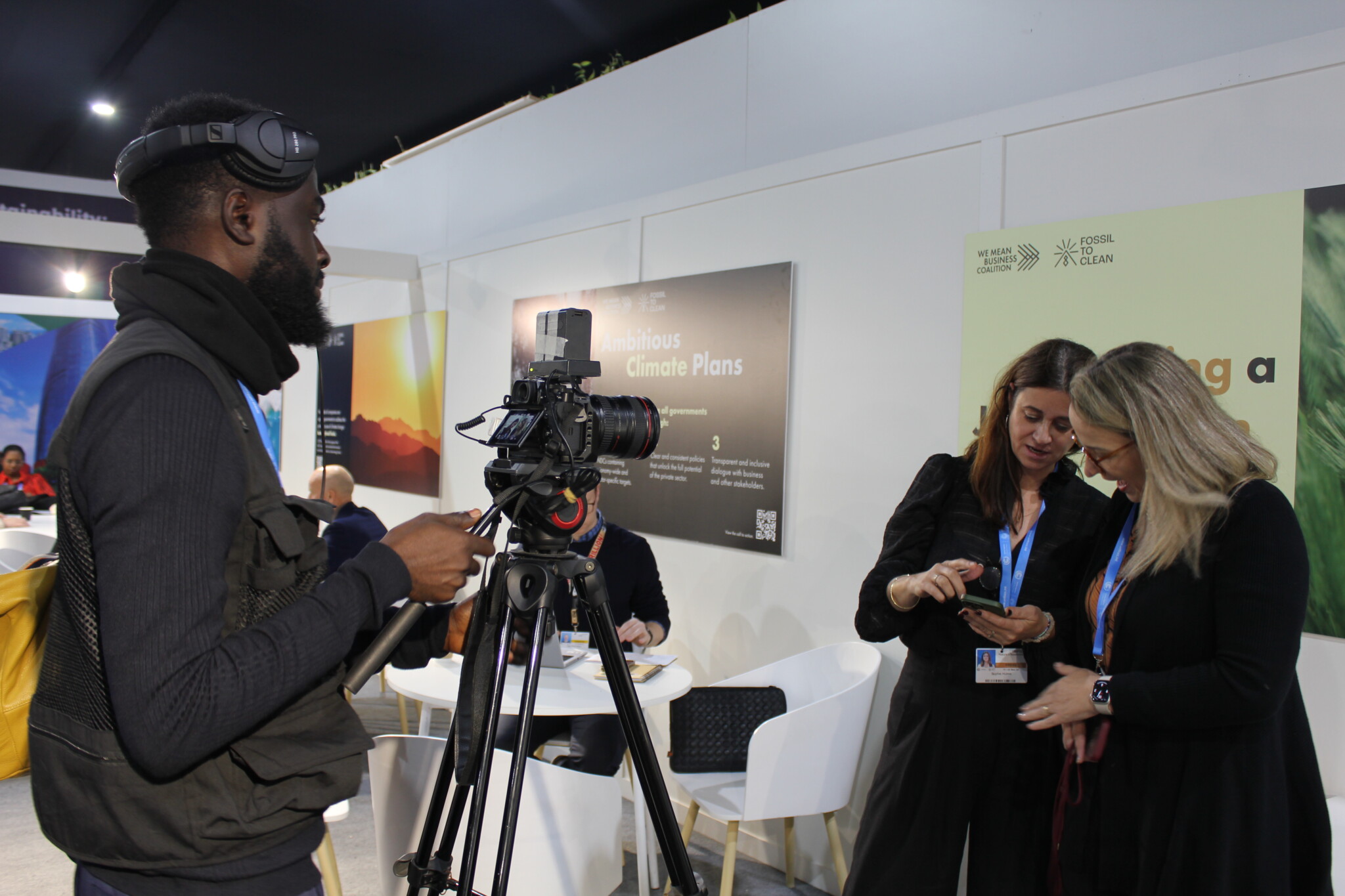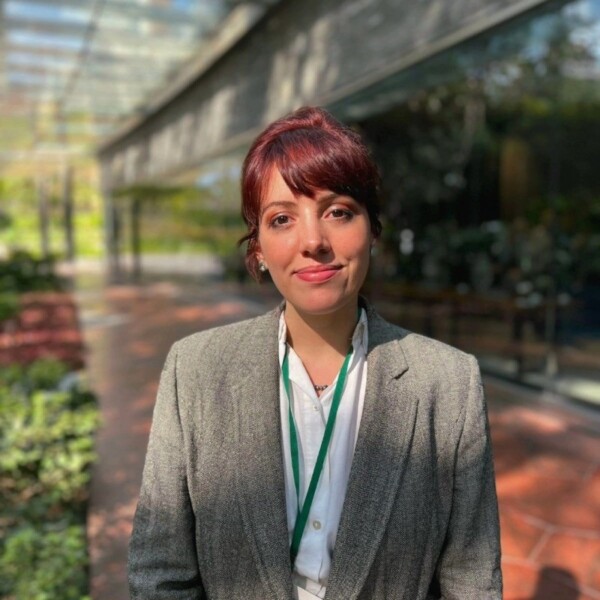
In the final days of COP29, the urgency to act has never been greater. Over 100 organisations and influential individuals, and counting, have issued an urgent nature statement calling on parties to address the severe nature finance gap.
Closing the nature finance gap would:
✔ Unlock solutions for a sustainable future.
✔ Enable countries to embed #NatureBasedSolutions into their Nationally Determined Contributions #NDCs.
✔ Drive meaningful progress on climate and biodiversity.
As negotiations reach their conclusion, bold commitments are needed to prioritise nature at the heart of climate finance.
From the Corridors at COP29: Brazil’s Vision for COP30 in Belém
As COP29 concludes, Alice de Moraes Amorim Vogas, Head of COP30 Brazil, shares an inspiring vision for COP30 in Belém. Brazil aims to consolidate its leadership in the global climate agenda, showcasing its commitment to transitioning to a low-carbon, inclusive future.
From the Corridors at COP29: Reflecting on Progress and Building the Bridge to Belém
With COP29 now concluded, James Lloyd, Nature4Climate Director, reflects on the summit's outcomes and the path ahead to COP30 in Belém. While COP29 did not fully meet the financial ambition required to address the biodiversity and climate crises, progress was made in key areas. Advancements include movement on high-integrity carbon markets, increased forest financing, and ambitious NDCs from Brazil and the UK.
Nature Day at COP29: Why Nature Deserves More than 3% of Climate Financing
Featuring insights from Balkissou Buba (Global Alliance of Territorial Communities, Lina Barrera (Conservation International), Fernanda Facchini (Natura), Marina Negrisoli (Suzano), and John Verdieck (The Nature Conservancy), this video underscores the urgency of integrating nature into climate policies, financing, and business strategies.
From the Corridors at COP29: Urgent Call to Address the Nature Finance Gap
Patricia da Matta, Communications Lead at Nature4Climate, shares an urgent ‘COP29 Nature Statement’ issued by over 100 organisations and influential individuals. The statement calls on parties to address the severe nature finance gap, emphasising the lack of progress in delivering on commitments and the need for an ambitious New Collective Quantified Goal (NCQG). Achieving this goal is critical to embedding nature into national climate strategies (NDCs) and unlocking solutions for a sustainable future.
From the Corridors at COP29: Tracking Commitments to Nature-Based Solutions
Kyle Saukas, Deputy Director of Communications at Climate Advisers, discusses the Nature Commitment Tracker, which monitors major public and private sector commitments to nature-based solutions. While commitments nearly doubled from 2019 to 2023, 2024 has seen a sharp decline. From the corridors at COP29, Saukas emphasises the urgency of putting nature at the heart of climate finance discussions. As one of the most cost-effective and impactful solutions for addressing climate change, nature-based solutions must be prioritised to unlock their full potential for people and the planet.
From the Corridors at COP29: A Guide to Including Nature in NDCs
Kiryssa Kasprzyk from Conservation International introduces the second edition of Nature for Climate’s guide on including nature in Nationally Determined Contributions (NDCs). This comprehensive resource provides 15 guiding points for policymakers to integrate nature-based solutions into national climate commitments at every stage, from preparation to setting mitigation and adaptation targets, addressing loss and damage, and ensuring implementation.
From the Corridors at COP29: UK’s Leadership on Nature and Climate
Mary Creagh, Minister for Nature in the UK government, highlights the UK’s renewed commitment to tackling climate and nature challenges. At COP29, she discusses the UK’s ambitious target to reduce emissions by 81% by 2035 and its role in global efforts, including the creation of the Cali Fund, a crucial initiative to support nature and Indigenous Peoples. With eyes on the upcoming global plastic pollution treaty in Busan and the landmark COP30 in Belém, this video underscores why the coming year is a pivotal year for nature, climate, and people.
Forests and Food: Sustainable Solutions for Climate and Communities at COP29
Gertrude Kabusimbi Kenyangi (Support for Women in Agriculture and Environment), Esther Benzuela (Association for Sustainable Rural), Thomas Skirrow (Tree Aid), Jocelyn King (First Australians Capital) and Sharon London (FSC) explore the vital relationship between forests and food in this short COP29 Nature’s Newsroom film. Rising global populations and agricultural demands are increasing pressure on forests, leading to deforestation and its devastating impacts on communities.
COP29 Week 1 Wrap-Up: Finance, Ambition, and the Call for Nature Funding
In this wrap-up video, Clare Shakya (TNC), Maria Netto (ICS), Anne Samante (MPIDO), Balkissou Buba (GATC), and Tom Skirrow (Tree Aid) reflect on the critical need for increased funding for nature, including the call for 25% of financing to reach Indigenous Peoples. To meet the 1.5°C target, funding for nature must triple by 2030. Hear their insights and call to action for bold leadership in the weeks ahead.
COP29 Jargon Buster: Understanding Key Acronyms for Nature and Climate Action
Navigating COP29 can be overwhelming with all the climate jargon. In this "COP29 Jargon Buster," we break down terms like NCQG, NDC, REDD+, and more, simplifying what they mean and why they matter. We decode the language of climate action for nature and highlight the key goals being discussed at the 29th UN Climate Conference. Whether it’s finance, adaptation, or emission reduction, understanding the language is the first step to impactful change.
Cutting Methane: The Fastest Path to Avoid Climate Tipping Points at COP29
Durwood Zaelke, President of the Institute for Governance and Sustainable Development (IGSD), and Zerin Osho, Director of the India Program, explain why cutting methane emissions is critical to slowing global warming and avoiding catastrophic climate tipping points. Methane, a short-lived climate pollutant, is the only strategy capable of reducing warming quickly enough to keep us within the 1.5°C threshold. Discover how the conversation on methane has evolved from COP26 to COP29, and why it’s at the centre of urgent climate action.
From the Corridors at COP29: Mobilising Private Finance for Climate Action
Manuel Pulgar-Vidal from WWF International emphasises the critical role of private finance in driving climate action at COP29. While public finance alone won't meet the climate challenge, COP29 can create clear incentives to mobilise private investment in global climate goals. Manuel calls for a strong political signal on the resilience of the climate process and for fostering synergy across climate, biodiversity, and desertification initiatives.
From the Corridors at COP29: Article 6 and Transparency in Climate Markets
Beatriz Granziera, Senior Climate Policy Advisor at The Nature Conservancy, explains the critical role of Article 6 under the Paris Agreement. This market mechanism enables countries to cooperate voluntarily to meet their NDCs in a cost-effective way, including nature-based solutions like REDD+. Beatriz emphasises the importance of transparency and robust reporting to build trust in these markets and ensure their effectiveness. Learn why Article 6 is a key tool for advancing global climate goals.
From the corridors at COP29: Breaking new ground in forest conservation with REDD+
Clare Shakya, Global Managing Director of Climate at The Nature Conservancy, explains how REDD+ rewards countries and communities for reducing deforestation through results-based payments. Forests represent one of the most cost-effective solutions for reducing global emissions, and REDD+ provides a high-integrity framework that ensures confidence for investors while benefiting biodiversity and local communities. Hear why REDD+ is critical to nature-based climate solutions and how recent advancements are paving the way for its success.
